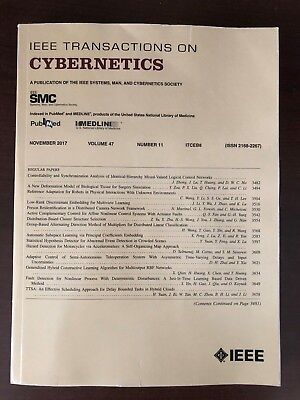Toward Adaptive and Interpretable Process Monitoring: Incremental Variational Graph Attention Autoencoder With Probabilistic Inference.
IF 9.4
1区 计算机科学
Q1 AUTOMATION & CONTROL SYSTEMS
引用次数: 0
Abstract
Complex industrial processes exhibit typical nonstationarity due to frequently fluctuating material flows and complex control loops. This poses three challenges for trustworthy process monitoring, including data drift, coordination of old and new knowledge, and interpretability. In this study, the adaptive and interpretable process monitoring problem is formulated as an online updating strategy and the spatial topology structure representation learning process monitoring problem. An I-VGATEPi framework is proposed, which aims to effectively learn continuously from dynamically changing industrial data to make interpretable monitoring results. First, an incremental learning strategy based on the BSOM is presented, which can distinguish between real faults and time-varying changes. Once normal samples are encountered, the itself and downstream model are elegantly updated with a dynamic down-sampling replay strategy without leading to catastrophic forgetting. Subsequently, a VGATEPi is proposed, which endows interpretable spatial structural relationships through priors and effectively captures the variability of spatial latent representations suitable for nonstationary processes. Then, an incremental variational Bayesian inference is introduced to calculate the adaptive thresholds to adapt the system. In addition, an anomaly-AAGAL mechanism is provided to localize fault root causes and propagation paths. Finally, the effectiveness of the proposed method is validated through two industrial applications. The results demonstrate that the proposed method can significantly enhance the performance of process monitoring, especially for reducing the false alarm rate (FAR) in process monitoring schemes. Moreover, it offers interpretable causal relationships among faults.面向自适应和可解释过程监控:带概率推理的增量变分图注意自编码器。
复杂的工业过程由于频繁波动的物料流和复杂的控制回路而表现出典型的非平稳性。这给可信过程监控带来了三个挑战,包括数据漂移、新旧知识的协调和可解释性。本研究将自适应可解释过程监控问题表述为在线更新策略和空间拓扑结构表示学习过程监控问题。提出了一个I-VGATEPi框架,该框架旨在有效地从动态变化的工业数据中持续学习,以获得可解释的监测结果。首先,提出了一种基于BSOM的增量学习策略,该策略能够区分真实故障和时变变化。一旦遇到正常样本,本身和下游模型就会用动态下采样重播策略优雅地更新,而不会导致灾难性的遗忘。随后,提出了一种VGATEPi方法,该方法通过先验赋予可解释的空间结构关系,并有效捕获适合于非平稳过程的空间潜在表征的可变性。然后,引入增量变分贝叶斯推理来计算自适应阈值以适应系统。此外,还提供了一种异常- aagal机制来定位故障的根源和传播路径。最后,通过两个工业应用验证了该方法的有效性。结果表明,该方法可以显著提高过程监控的性能,特别是降低过程监控方案的虚警率。此外,它还提供了故障之间可解释的因果关系。
本文章由计算机程序翻译,如有差异,请以英文原文为准。
求助全文
约1分钟内获得全文
求助全文
来源期刊

IEEE Transactions on Cybernetics
COMPUTER SCIENCE, ARTIFICIAL INTELLIGENCE-COMPUTER SCIENCE, CYBERNETICS
CiteScore
25.40
自引率
11.00%
发文量
1869
期刊介绍:
The scope of the IEEE Transactions on Cybernetics includes computational approaches to the field of cybernetics. Specifically, the transactions welcomes papers on communication and control across machines or machine, human, and organizations. The scope includes such areas as computational intelligence, computer vision, neural networks, genetic algorithms, machine learning, fuzzy systems, cognitive systems, decision making, and robotics, to the extent that they contribute to the theme of cybernetics or demonstrate an application of cybernetics principles.
 求助内容:
求助内容: 应助结果提醒方式:
应助结果提醒方式:


